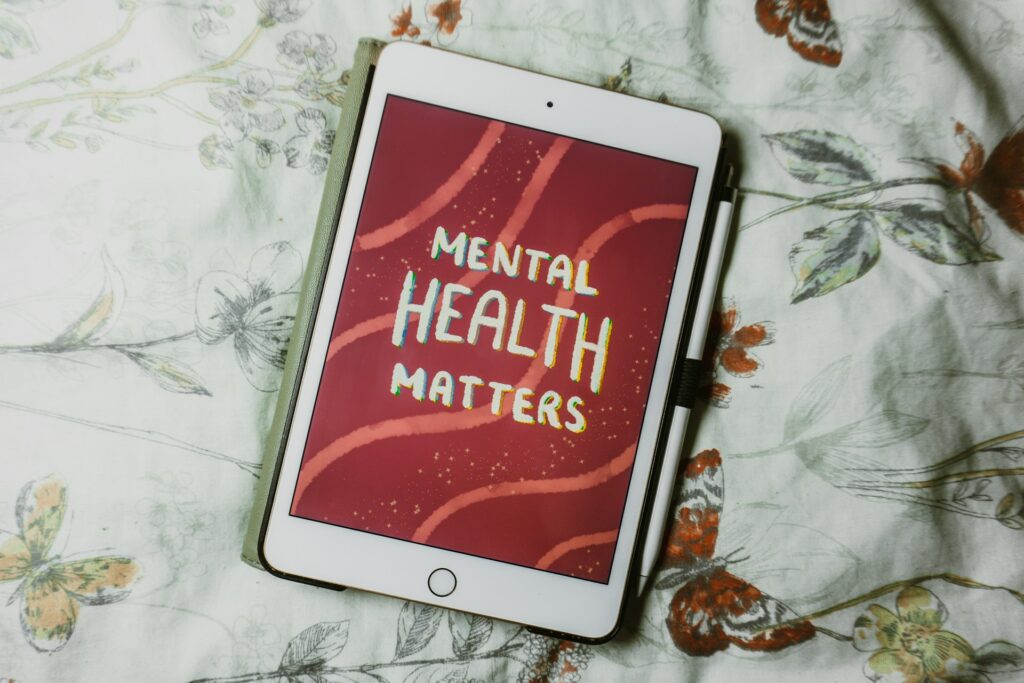Chatbots and Artificial Intelligence: Are They Capable of Providing Real Therapy against Mental stress?

Chatbots and Artificial Intelligence: Are They Capable of Providing Real Therapy against Mental stress?
The situation affecting mental health is becoming worse. The number of individuals who are battling with anxiety, depression, burnout, and loneliness is at an all-time high around the globe; nevertheless, millions of people still do not have access to professional assistance. Therapy comes at a high cost. Long waiting lists are common. There is still a barrier of stigma. Also, there are numerous locations where skilled practitioners in the field of mental health are just unavailable.
The artificial intelligence chatbot brings a new sort of listener into this void. There are a variety of applications that are using artificial intelligence to provide assistance, counsel, and even emotional companionship. These applications range from apps that provide relaxing activities to conversational bots that resemble therapists. A critical concern arises, however, as these technologies continue to progress in their capabilities: are chatbots capable of providing genuine therapy? Is it possible that we are entrusting our most profound emotions to computers that have no feelings at all?
Let’s investigate the growth of artificial intelligence (AI) mental health tools, including how they function, what they are capable of (and are not capable of), and whether or not they may one day serve as a reliable source of therapy alongside human therapists.
The Increasing Popularity of Ai-Based Therapy Applications
The last few years have seen the development of hundreds of applications that imitate therapeutic discussions via the use of artificial intelligence. These apps are designed to promote mental wellbeing. Several applications, such as Woebot, Wysa, and Replika, provide users the opportunity to engage in a conversation with a chatbot about their feelings, stress levels, relationships, or ideas. Not only do these bots provide customers with one-liners, but they also make use of sophisticated natural language processing (NLP) to carry on conversations, pose inquiries, and react with consideration.
The fact that these tools are easily accessible is what makes them appealing. The majority of the time, they are either free or very inexpensive, and they are accessible around the clock. Having the ability to launch an application and have a conversation with a voice that seems to be compassionate may provide instant comfort to someone who is battling with worrisome thoughts and is laying awake at two in the morning. The use of chatbots provides a confidential and anonymous area for those who are afraid of being stigmatized or who are unable to pay treatment.
In addition, several platforms include exercises that are based on cognitive behavioral therapy (CBT), writing prompts, or guided meditations. These activities are all individualized by artificial intelligence depending on how the user interacts with the platform. It should not come as a surprise that millions of individuals are now using chatbots to get help for their mental health.
Is It Indeed Possible for a Bot to Understand Human Emotions?
The discussion revolves around this basic point. Regardless of how sophisticated the language model may be, some people believe that a chatbot will never be able to really comprehend emotions such as joy, sadness, trauma, or suffering. It does not experience any feelings. The history of it is nonexistent. There is no formation of genuine attachments. It does nothing more than imitate conversation by using patterns in language as its basis.
Despite this, a significant number of users have reported feeling heard. They even claim that they feel better after conversing with an AI than they do after chatting with a real human. While this may seem to be unusual, it really relates to a more fundamental truth: there are times when individuals do not want counsel. Their want is to be heard without being evaluated in any way. AI has the potential to play a surprise role in this regard. A chat with an artificial intelligence bot might seem like a safe zone because it does not get irritated, it does not interrupt, and it does not bring its own prejudices into the discourse. This might be significant for someone who is experiencing a great deal of suffering.
In spite of this, empathy in code is not the same thing as empathy in a simple pulse. There is more to traditional therapy than just talking; it is a relationship that is founded on trust, observation, and the connection between people. A portion of the language of empathy may be imitated by chatbots, but they do not experience it themselves. Their capacity to deal with complicated feelings or painful experiences is hindered as a result of this.
The Potential Ethical Dangers of Artificial Intelligence in the Field of Mental Health
There is a wave of ethical problems that comes along with the expanding popularity. What happens when a person confides in a chatbot that they are contemplating ending their own life? Is it possible for the bot to correctly respond? Is it possible to elevate the issue to the level of emergency services? While there are some applications that pass the criteria, others have not. Data privacy is another one of our concerns. What happens to the data that is collected when users express their feelings with an application? Who is the owner of it? How does it have protection? There is a possibility that users are unaware that their most vulnerable moments are being saved on servers or utilized to train other models in the future.
It is also possible that individuals may place an excessive amount of reliance on chatbots rather than seeking actual assistance. AI might be a useful complement for some individuals. On the other hand, artificial intelligence is not sufficient for those who have experienced more severe trauma or who suffer from major mental disease. There is a possibility that we may do more damage than good if we begin to consider it a substitute for the treatment provided by professionals.
Because of this, a significant number of professionals in the field of mental health are advocating for the establishment of transparent rules, as well as regulation, for artificial intelligence-based mental health solutions. They must be used properly, just like any other technology, and users need to be aware of what these bots are capable of and what they are not capable of doing.
What AI Can Do and What It Can’t Do Artificial intelligence mental health tools are most effective when they are seen as companions rather than counselors. Individuals who are seeking mindfulness and daily emotional check-ins, as well as those who experience moderate stress or occasional worry, are perfect candidates for these. It is not within their capabilities to diagnose, to handle emergency circumstances, or to assist someone through the process of profound psychological recovery.
In the interim between treatment sessions, they are able to provide support, education on mental health, and a consistent space for individuals to express their views. These individuals have the potential to become great friends for therapists, rather than substitutes for them.
Take a moment to imagine a future in which your therapist receives a weekly report of your mood patterns based on the encounters you have with robots. If you want to practice coping skills before your next session, you may employ a conversational artificial intelligence. It is in this area that many professionals in the industry see the greatest potential: the combination of human competence with industrial uniformity.
The Prospects for Artificial Intelligence and Emotional Support
The emotional intelligence of artificial intelligence will continue to develop with the progression of technology. Detecting tone, hesitancy, and other minor signals of worry is already something that models are learning to do. In the future, bots could be able to provide help that is even more individualized and adaptable. Virtual reality surroundings might even be included in some of them, which could be used for deep relaxation or therapeutic simulation.
The issue that remains, however, is whether or not a machine will ever be able to replace the human connection that is at the heart of healing. Currently, it seems that the answer is not yes. In spite of this, artificial intelligence does not have no place in the field of mental health. technology is possible for technology to cover gaps, lessen feelings of loneliness, and encourage individuals to take the initial step when it is used appropriately. Despite the fact that it is not a replacement for treatment, it may be the gateway that leads to therapy for many people.
Is it Better to Talk or Seek Therapy?
Chatbots powered by artificial intelligence are not therapists. On the other hand, they are evolving into something strong, a type of digital companion for a society that is more stressed and isolated. They are present. They provide a response. They never experience fatigue.
You may find that having someone or something to speak to is all you actually need at times when you are going through a difficult moment.
The difficulty that we will face as we go ahead is to ensure that these technologies support the well-being of humans without trying to be human themselves. Having a talk is just one aspect of therapy. In spite of this, having a conversation, even with a computer, may still be therapeutic.





